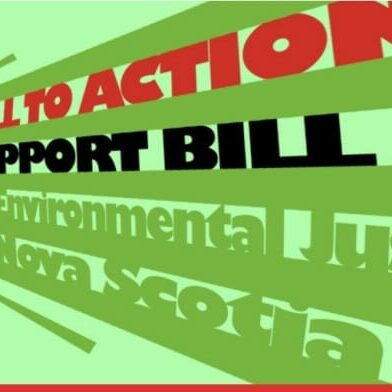
Environmental racism bill hopes to get to second reading
First Canadian bill of its kind asks NS Ministry of Environment to consult communities near hazardous sites
Lincolnville has a large African-Nova Scotian community, and it also has a landfill right beside it. This isn’t rare for the African-Nova Scotian community: throughout the province, there are several toxic waste sites — many of which lie near African-Nova Scotian, Acadian or Mi’kmaq communities.
This is known as environmental racism. Environmental racism refers to placing environmental hazards near communities of the working poor or of colour, who often lack the power to have their concerns heard or afford preventative measures, such as garbage removal.
The Nova Scotia Legislature passed the first reading of Bill 111: An Act to Address Environmental Racism on Apr. 29. The bill asks the Nova Scotia Ministry of the Environment to begin consulting the public near toxic waste sites about the effects it has on the communities.
Ingrid Waldron, an Assistant Professor at Dalhousie’s School of Nursing, is the project lead and head researcher of Environmental Noxiousness, Racial Inequities and Community Health (ENRICH). She organized several workshops in 2013 and 2014 to speak with the African-Nova Scotian and Mi’kmaw communities near these environmentally hazardous sites to discover the problems within the communities.
Community members discussed health issues, such as high rates of cancer, diabetes and asthma, as well as polluting the water and air, and thus the food.
“People have to understand that it is racism,” Waldron said. “I’m trying to get them to see this is a manifestation of racism.”
Waldron and her team at ENRICH filmed the community workshops and held interviews with community members to create a documentary, “In Whose Backyard? – Exploring Toxic Legacies in Mi’kmaw & African Nova Scotian Communities.” Waldron also wrote a report on the consultations.
Waldron sent out these resources to several Nova Scotia governmental agencies, but discovered that not much could be done due to lack of resources. She met with Nova Scotia Environment three times in 2013 and they said that they can’t get rid of these waste sites—or even hold community consultations—because of their limited resources.
An ENRICH colleague led Waldron to Lenore Zann, MLA for Truro–Bible Bill–Millbrook–Salmon River. Zann heard Waldron’s problems and suggested that they pass a bill to ask the government for community consultations around environmental hazards.
“Lenore developed a bill that people can’t say no to,” Waldron said. “It’s a simple, benign bill that says you need to do consultations.”
“We’re using the term racism—it’s blunt,” Waldron added. “I could see a term like that turning people off.”
Bill 111 was passed in April. The second reading of the bill could happen on Nov. 12. However, only certain bills are chosen for that reading, and Waldron hopes it will be Bill 111. If the second reading approves it, it can go to a third reading. If the bill passes on the third reading, it will mean it can be officially passed.
“This is the first ever bill that has ever been created in Canada on environmental racism,” Waldron said. “Can you imagine, if it’s passed, we show the rest of Canada that we’re a leader in this issue?”






